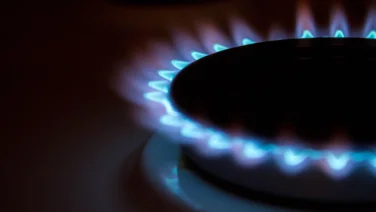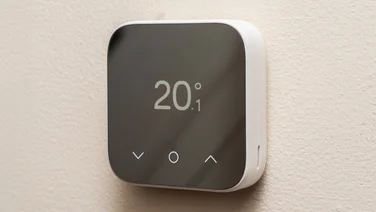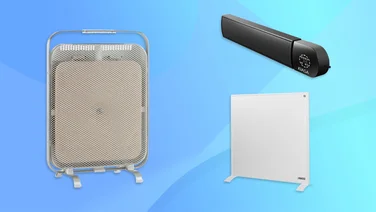To help us provide you with free impartial advice, we may earn a commission if you buy through links on our site. Learn more

Nothing is more frustrating than coming in from the cold, turning on the heating and realising minutes later you don’t feel any warmer. Our central heating is essential for keeping us warm and comfortable during the winter months, and bleeding your radiators is an important step to making sure it is working at its best.
Bleeding a radiator is not as painful for the radiator as it sounds. It is merely the process of removing trapped air that naturally builds up in our radiators, which prevents the radiator from heating up fully. It will not only improve the efficiency of your central heating, but it can also decrease the cost of energy bills and increase the longevity of your boiler system.
You might be cautious about bleeding your radiator if you’ve never done it before, but don’t worry – we’ve broken down how to bleed your radiator into simple steps, but first, here are answers to the most common questions.
How often should I bleed my radiator?
You should bleed your radiators, at minimum, at the start of every winter, or after a period of not using the heating, because that would have given more time for air to build up. It is also worth noting that some radiators will need bleeding more often than others, depending on how far away they are situated from the boiler. According to experts, twice a year works best.
READ NEXT: Best electric heaters
How do I know if my radiator needs bleeding?
One of the biggest telltale signs that it’s time to bleed your radiators is that your house is not getting as hot as it should. To test this, run your hands along your radiators when the heating is on. If it feels cold at the top and warm at the bottom, it may be time for a bleed.However, if you feel your radiator, and it is warm at the top and cold at the bottom, this could be a sign of sludge – which is a mixture of water, air and dirt that gets trapped in your radiator. This will require a visit from an engineer to be resolved. Another telltale sign that your radiator needs bleeding is if it has started making gurgling or clanging noises in the pipes, as this could be a sign of trapped air.
If you’ve bled your radiators recently and these problems are still occurring, there could be a larger problem with your radiator or central heating. Therefore, we always recommend calling a professional if you are unsure.
READ NEXT: Best oil-filled radiators
How to bleed a radiator – before you start
You won’t need a lot to bleed a radiator, but some items are essential:
- A rag or a bowl to hold underneath the radiator valve to catch any water that drips out
- A sheet to cover any carpet or paintwork near your radiator in case of damage from hot water
- Protective gloves to avoid any potential hot water spills on your hands
- A radiator key or a flathead screwdriver, depending on your radiator, which will be used to turn the radiator valve and release the air from inside. Most modern radiators use a flathead screwdriver, but if you need to purchase a radiator key, they can be bought from Amazon in packs of four, and some even come with a designated drip section
READ NEXT: Best infrared heaters
How to bleed a radiator
1. Start by turning off your central heating and leaving it to settle for around five minutes, so as not to release scalding water from the radiator and burn yourself. Allow your radiators to be cold to the touch.
2. If you are bleeding all of your radiators, it is advised that you start with the radiators at the lowest point in your house, as these are usually the furthest away from your boiler and have the most air built up inside.
3. Once you are at the radiator, pop on your protective gloves and cover any paintwork and the carpet with your sheet. Locate the radiator valve: this should be on the side of your radiator, near the top.
4. Holding the rag or bowl underneath the valve, insert the radiator key or the screwdriver and turn it anti-clockwise about a quarter of the way. Be careful not to turn it too much or it could come out completely.
5. As the valve is released, you should hear the air coming out. The bleeding should take about 20-30 seconds, but can be up to a minute if your radiators have not been bled for some time.
6. You’ll know when your radiator is done bleeding when water begins to run smoothly from the valve, and when this happens, turn the valve clockwise and tighten.
7. Once you have bled all the necessary radiators, you can switch your heating back on to check that it is hot all over. If the radiators are still cold, they may still need bleeding, or there may be another problem. In this case it is best to contact an engineer.
8. You may also want to check the pressure of your boiler after bleeding, and make sure it hasn’t decreased. If it has, simply turn it back up again to ensure your heating is working at its best.






